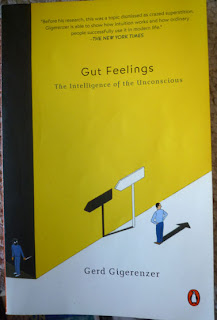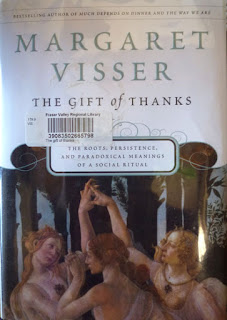In response to the suggestion that my mountain of cubes might need another element to provide "tension", at home I tried adding a doorway or two -

In class, a moment of jubilation when the plan to plant the legs of the rickety steps into holes in the cubes worked - the cube supported the step. But it's made of foamboard - the porcelain ones will be heavier. And there will be several steps on one cube.

The legs sink down through the holes, given a chance - perhaps little nests of thread will stop them - and be "subliminal" rather than obtrusive -

The cube will need reinforcing in some way. Will wire, at each end, be strong and invisible enough (white-coated wire perhaps? florists wire?) - well the wire on hand was strong enough but hard to bend accurately and it wouldn't stay where it was put -

Accurate bending will need a jig; I'll make one with wood and nails at home, but meanwhile this bit of improvisation helped -
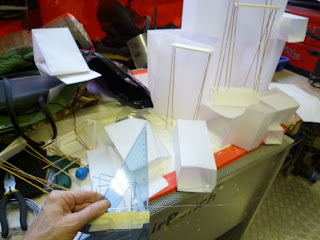
A continuous wire to strengthen the cube -
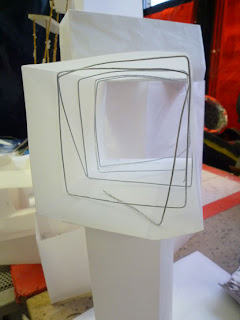
And here it is supporting two steps (amid the paraphernalia of the sculpture room)

As to the matter of how many steps a cube can support - that will depend on the size of the porcelain pieces, and possibly their weight. They can be used to mark the position of the legs; it's helpful to splay the legs a little, so I've marked the corners of the rectangles and used a bradawl to punch the hole -
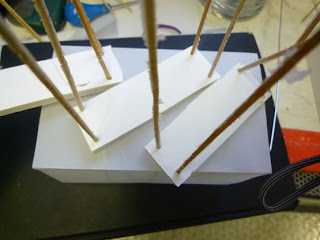
The wire shows through a little, adding that element of (literal!) tension -
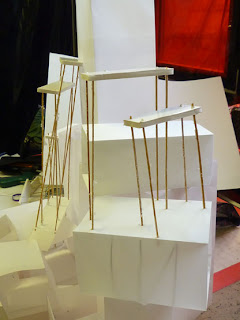
It's interesting to solve these little problems along the way, in fact the "engineering challenges" are what I particularly enjoy about sculpture. And I love working with the translucent (and crackly) qualities of the tracing paper, not to mention the bamboo sticks, which are taken from a paper window-blind, and recently the embossed porcelain. I'm aiming to keep this pared down and hope that the final piece will ... what? ... "provide a space for contemplation" - ?
Having a proper title for it would help.


 London Underground has been commissioning and presenting art and design since 1908. Since 2000, Art on the Undergound has been working with artists to produce and present new artworks "to enhance and enrich the journeys of millions on the Tube every day". Read and see more here.
London Underground has been commissioning and presenting art and design since 1908. Since 2000, Art on the Undergound has been working with artists to produce and present new artworks "to enhance and enrich the journeys of millions on the Tube every day". Read and see more here.
















































